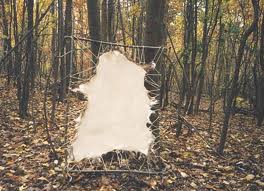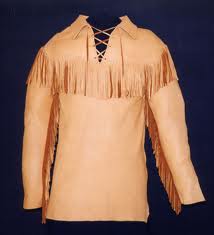Tanning Hides Using Deer, Elk, Caribou, Antelope and Moose Skins
The art of tanning hides is one that dates back millennia across human history and one that will become increasingly popular in the case of an apocalyptic event that stops clothes manufacturing. There are only so many repairs that a person can make to a shirt or pair of pants before they become unwearable and besides, tanned hides can offer much better protection against the rain and the cold than cotton and nylon.
Uses for Tanned Hides
Being skilled in the art of tanning hides will allow you to become much more self-sufficient in a survival scenario. For example, you can use tanned hides to make:
- Clothes - the biggest use that people think of when they're tanning hides is clothing. The main trunk of a wild boar can be turned into a shirt and some gloves, while a deer can offer enough hide to make a comfortable pair of pants. The tanning process naturally waterproofs the material and by lining the dried material with some of the animal's own fur, you can create great insulation against cold weather.
- Tents - stitched together, a collection of tanned hides will provide an instant covering for a simple tent structure. You can take a leaf from the Native American survival book and wrap a large hide around a conical structure of wooden poles to make your own wigwam. This structure is portable as all the parts dismantle and all the parts are renewable meaning that you can take it on long trips from your base and make spare parts if any break or wear out.
- Diapers - an unusual use for tanned hides is to make reusable diapers. This may not sound pleasant, but in the long run the human race will need further generations to survive and diapers allow you to move around without worrying about leaving tell tale mess behind. The hides need to be cut into shape and lined with thick fur to make them absorbent. The water proofing means that you can wash them again and again, though you'll need to fully dry them each time round to keep them supple.
Best Skins for Tanning Hides

Once you've decided what you'll be tanning hides for, you'll have a clearer idea about which animals you want to catch. Obviously, you will be limited by the animals that are native to your local region, but if you have a choice, the tanned hides of the following animals each offer different advantages:
- Elk - the sheer size of elk, usually around twice that of a regular deer, means that they are ideal of any project where you need a single large sheet, such as making overcoats or panels for a tent.
- Moose - moose pelts tend to be a little thicker than elk but have the same sort of flexibility, which makes them the first choice for footwear. Moccasins are easy to make from moose hides and one animal will provide you with half a dozen pairs, along with the sinew to make the thread.
- Pronghorn antelope - the pronghorn is the only antelope species left in North America, and if you can get hold of its lightweight hide, you'll find it suitably cool for summer clothing.
- Deer - deer pelts are the go to skins for tanning as the animals are plentiful and it's relatively easy to skin them. The pelts are supple and flexible making them perfect for diapers and all sorts of clothing. Smaller sections can be kept for patches and repairs.
You can also tan just about any other animal hide, including: cow, horse, pig, goat, and rabbit, as well as skunk, opossum, raccoon, and dog. In fact, any fur-bearing animal's hide can be tanned for leather, or just tanned on one side for a fur.
You will almost certainly need expert help when you're tanning hides, especially when you're starting out as it's easy to make a simple mistake with the preparation, solution or drying which will ruin the pelt. Look online for local craftspeople who might be willing to share their skills and knowledge with you.
Return from Tanning Hides to Old Time Skills
Print This Page






New! Comments
Have your say about what you just read! Leave me a comment in the box below.